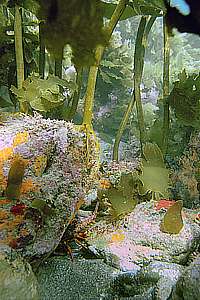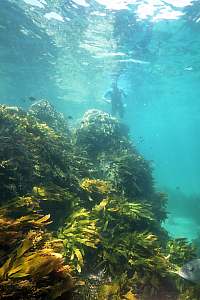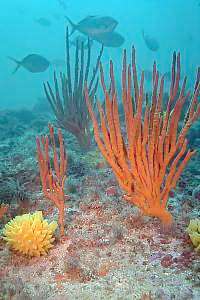 f029924: on a shaded vertical wall, the community that normally
lives underneath the kelp forest, could be photographed.
f029924: on a shaded vertical wall, the community that normally
lives underneath the kelp forest, could be photographed. |
 f030621: the purple urchin (Centrostephanus rodgersi)
is a powerful grazer, but not as meticulous as the common urchin. As a
result, carpet sponges can just survive.
f030621: the purple urchin (Centrostephanus rodgersi)
is a powerful grazer, but not as meticulous as the common urchin. As a
result, carpet sponges can just survive.
This urchin is happy with the shaded habitat, which is
not preferred by the common urchin. |
 f023025: a snorkeldiver shows the dimensions of this shallow
habitat found on sheltered steep walls. It is occasionally grazed by the
common urchin, but a storm sends these back to the deep, allowing fast
growing algae like sea lettuce to flourish.
f023025: a snorkeldiver shows the dimensions of this shallow
habitat found on sheltered steep walls. It is occasionally grazed by the
common urchin, but a storm sends these back to the deep, allowing fast
growing algae like sea lettuce to flourish. |



















































